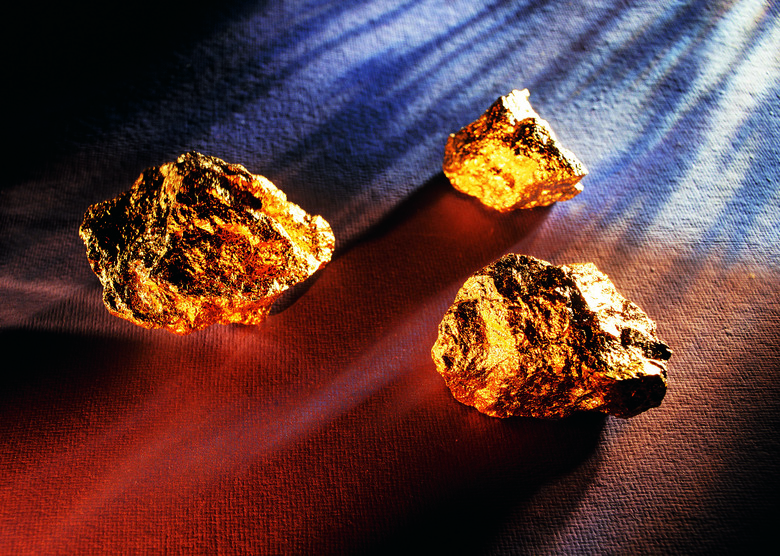How To Identify A Gold Bearing Area
Gold prospecting and identifying gold-bearing areas have become increasingly more feasible, due to research developments on the geological process of gold formation. (See References 1.) Gold bearing areas, mostly throughout the western United States, have drawn and sprouted entire communities based on prospecting. (See Reference 1.) Various hypotheses exist on how gold is formed as it surfaces in numerous types of volcanic and sedimentary rocks. Gold is mainly found in two types of deposits: lode (hard rock veins) and placer (surface). Locating the richest gold bearing areas primarily involves research, planning, dedication and funds. In other words, those who study geological surveys, land formations, rock structures and gold prospecting history prior to prospecting may have a better chance of finding desired amounts of gold. (See References 1 and 3.)
Step 1
Research the geological properties of a particular gold-bearing area of interest. These properties include the rock formations, structure, fault lines and the primary mineral content of the area. Also, study the mineralization process of gold in general to determine which segment of a particular area may yield gold. (See Reference 1.)
Step 2
Assess whether the area of interest is a lode deposit or placer deposit to determine proper equipment and prospecting methods. A lode deposit, consisting of hard rock usually found in a mine, mine dump or quartz vein will require a pick axe, hammer and chisel. Prospecting in a placer deposit, usually a stream, gravel lot or beach, requires a pan or dredging equipment. (See Reference 3.)
Step 3
Plan your prospecting excursion according to your research. Gather the appropriate equipment. Map out the area and pinpoint the exact location you plan on prospecting for gold. Also, check state and local government regulations on gold prospecting respective to that particular region. (See Reference 2.)
Things Needed
- Chisel
- Dredging equipment
- Geological survey map
- Gold pan
- Pick axe
- Rock hammer
TL;DR (Too Long; Didn't Read)
Due to the fact that gold is more weather-resistant than the rocks containing it, gold nuggets and fine particles can be washed down to concentrated placer deposits, or "pay streaks" by gradual erosion. (See Reference 1.)
Warning
Prospecting for gold often requires a large amount of funds for travel, accommodations and off-roading vehicles, without real promise of a good find, in most cases. In other words, a prospector must hope for the best, but be financially and psychologically prepared for the worst. (See Reference 2.)
Some gold-bearing areas, including national parks, are closed to prospecting. Violations may accrue major fines and in more serious cases, possible jail time. (See Reference 2.)
If a gold-bearing area is on privately-owned land, be sure to obtain permission from the owner in writing prior to prospecting. (See Reference 2.)
Cite This Article
MLA
Sakuwa, Chiara. "How To Identify A Gold Bearing Area" sciencing.com, https://www.sciencing.com/identify-gold-bearing-area-8758088/. 24 April 2017.
APA
Sakuwa, Chiara. (2017, April 24). How To Identify A Gold Bearing Area. sciencing.com. Retrieved from https://www.sciencing.com/identify-gold-bearing-area-8758088/
Chicago
Sakuwa, Chiara. How To Identify A Gold Bearing Area last modified August 30, 2022. https://www.sciencing.com/identify-gold-bearing-area-8758088/
